People of the U: Gary Reeves
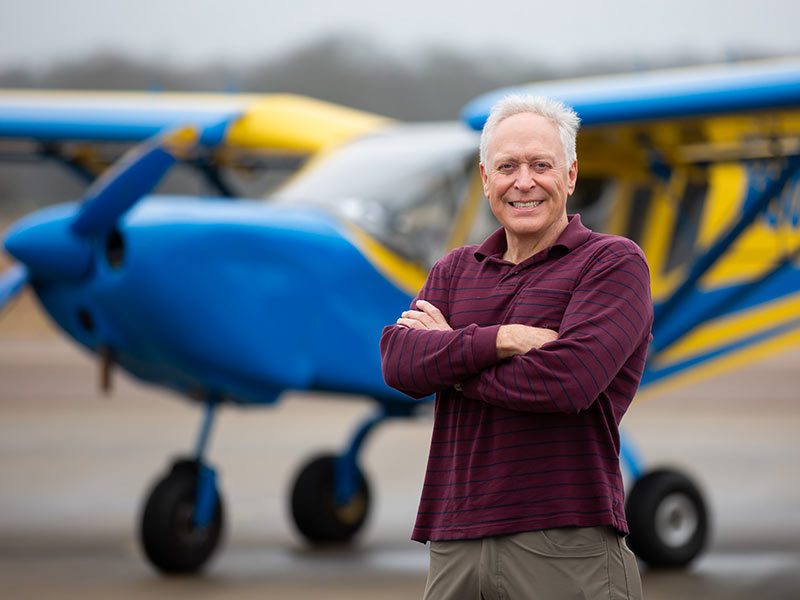
Most people could never fathom building their own airplane, but when Dr. Gary Reeves, professor emeritus and former dean of the University of Mississippi School of Dentistry, sets his mind to something, consider it done.
Dr. Reeves joined the United States Army in 1977, earned his bachelor’s degree from the University of Mississippi in 1981, and then earned his doctor of dental medicine at UMMC in 1984. While a member of the dental school faculty at UMMC, he was an active member of the Mississippi Army National Guard and served in Mosul, Iraq, in 2004. Upon returning from Iraq, he was inspired to finally earn his pilot’s license.
He completed that goal in 2006, and ten years later, it was time for the next step. “I’ve always wanted to own my own plane, to build it and be able to tinker with it and have the leeway to change it. Building the plane was fun, and definitely challenging, and at times it was quite a lot, especially with the rebuild because that was mostly me ” said Reeves.
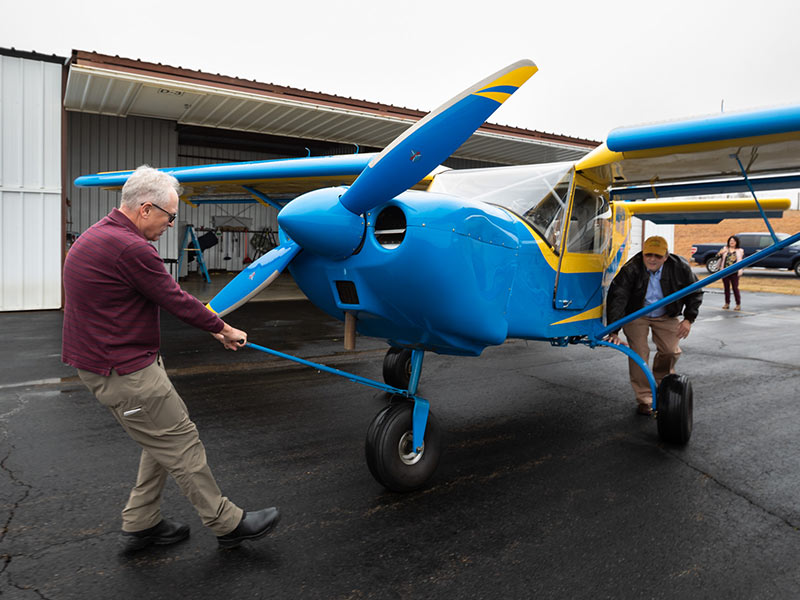
“When he first mentioned it I thought, ‘anything this man puts his mind to, he can accomplish!’’’ said his wife, Mary Beth Reeves. “But if there is anything you know about Dr. Reeves, he is the eternal optimist. His cup is always half full! So when he wanted to build a plane from a kit, I knew he was capable.”
Reeves had researched plane building for years, and had honed his flight skills and knowledge through his membership in the Wesley Flyers flying club in Mississippi. The club owns 3 planes, and members meet monthly to discuss trends in aviation and new safety regulations, and they use the planes for training and traveling.
He and another member, Bill Lehr, chief investment officer with Community Bank, often used the club’s planes to go to “fly-in’s” at Sun ‘n Fun in Lakeland, Florida, and AirVenture in Oshkosh, Wisconsin.
“You land at the field at Oshkosh, and there are 10,000 other planes. You roll off in the grass and put up tents and camp under the wing of your plane for a week. You see everything aviation related you could possibly imagine—military planes, we’ve even met Sir Richard Branson there. It’s where Gary did a lot of the research for his own plane,” said Lehr.
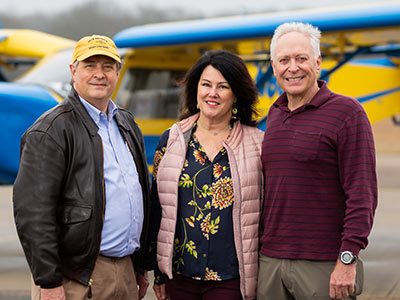
Reeves knew from the beginning that he wanted a
4-seat plane with the ability for short take offs and landings. “I wanted to be able to have fun with it and land places that aren’t airports for trips to Alaska or sandbars and things,” said Reeves.
He found what he wanted with Zenair Ltd. in Midland, Ontario, in Canada. He and Mary Beth took an initial trip to explore the options. “That was exciting. After that first trip, I was ready to get started,” said Reeves.
“We had a three-day build where we were given parts to build the rudder. I enjoyed working with the tools and the process flowed easily,” said Mary Beth.
They built the rudder and Reeves decided the Zenair CH 801 was the plane kit for him. “I spent about 5 weeks total in Canada building the plane. I took two more two-week trips to finish it,” said Reeves.
Because of regulations, he could not simply fly the plane into the United States. He had to take the plane apart and get it into the United States via tractor trailer first to Grenada. “We unloaded the pieces and talked with the guys about how we wanted to paint it, and after a few weeks, we found someone to take the painted pieces to John Bell Williams airport [in Raymond],” said Reeves.
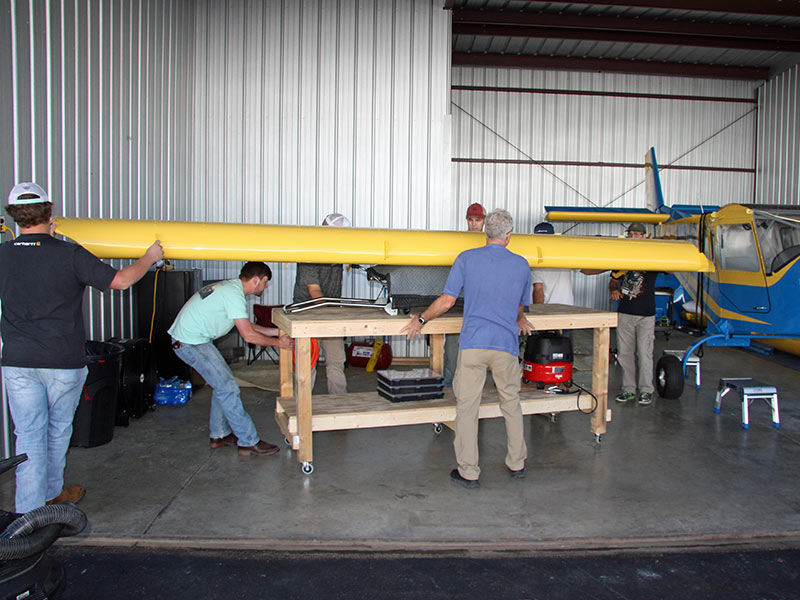
That’s when the real rebuilding fun began. Reeves chose John Bell Williams because he could have his own personal hangar, and also because Hinds Community College has an aviation maintenance technology program and the students have courses there. He asked W.P. Marsh, AMT Instructor and A&P/AI at Hinds Community College if his class could assist him.
“He asked if my students could help with putting the wings back on. I took my first semester students from fall 2017 and they put the wings back on pretty quickly,” said Marsh.
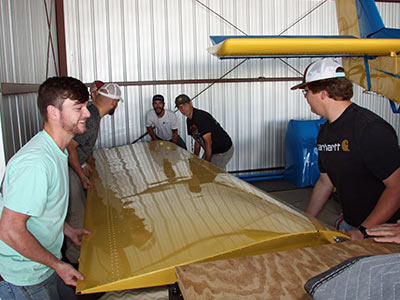
Reeves’s rebuild took about 10 months. “Since I’m the manufacturer of this, I determine what makes it safe and airworthy,” said Reeves. It also allowed him to have fun with additions. One feature he added was a Galaxy GRS parachute that can deploy in the case of an emergency and help the entire plane land safely.
When the plane was almost complete in spring of 2018, he reached out to Marsh again for assistance with the final weight and balance calculations.
“We worked through the measurements and equations and it was a good help for Gary I think, and it was a great teaching tool for my class. Instead of working through textbook calculations, they had a brand-new aircraft that had never been weighed and balanced, and everyone was able to work through the process and come up with the same answers in the end. It was a very fun experience,” said Marsh.
“Gary isn’t a mechanic by trade, but when I first saw his project, I was stunned at the quality of his workmanship. It was secure and he put it together meticulously. For a guy who isn’t in the business, he has turned out a very impressive and attractive plane,” added Marsh.
Soon after, Reeves got the air worthiness certificate from the Federal Aviation Administration and got repairman certified so he can personally sign off on the air worthiness every year. The final step was to fly the plane for 40 hours within a 25 mile nautical radius, and he had some help doing so.
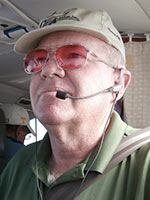
Local flight instructor Dann Fabian and Lehr helped fly with Reeves until he had completed the first 40 flight hours required by the FAA. “I have been involved with several aircraft “builds” and have restored an antique aircraft myself. I am confident in my ability to assess the quality of a newly built aircraft, and in the case of Dr. Reeves’ airplane, the build quality was outstanding,” said Fabian.
“The only concern I had was the way the aircraft handled at different speeds and weights. It was the first model of its type and no one had flown this actual version until Dr. Reeves and I took off on its first flight,” said Fabian.
Reeves will fly the plane to Fairhope, Alabama, in the near future to check out a minor engine oil leak, and then to Missouri to check the weight and balance issue.
For Reeves, his plane has turned from a lifelong dream into a full time passion, and he spends at least three days a week working on his plane.
“I’m really proud of Gary. A lot of people start airplanes but actually getting through the whole process is a lot of work. He’s done a great job,” said Lehr.
“It’s very unique to fly a plane like this. Truly exhilarating,” he said.


